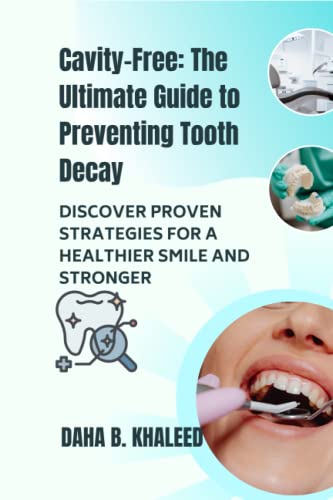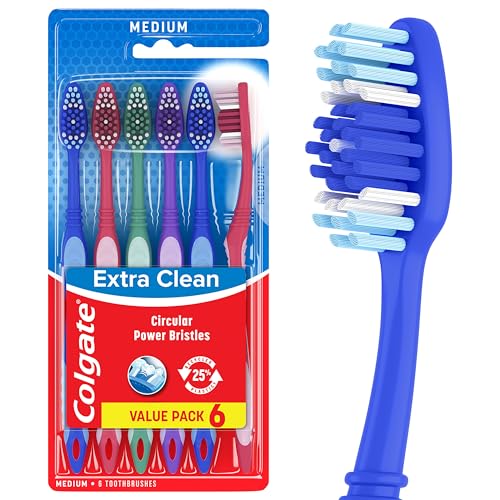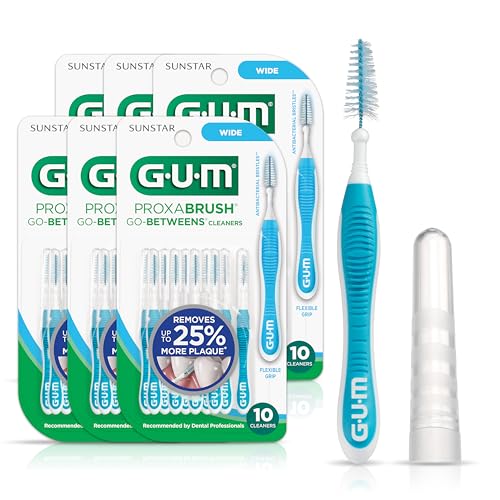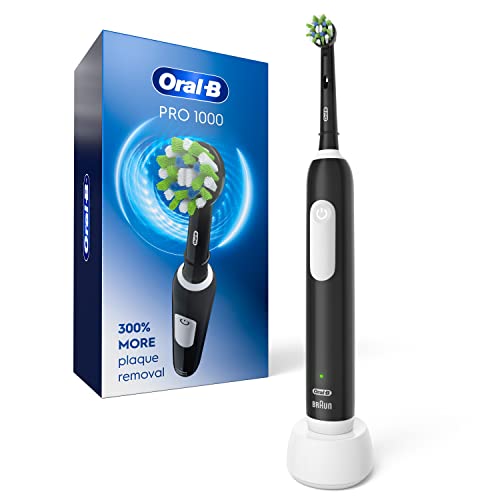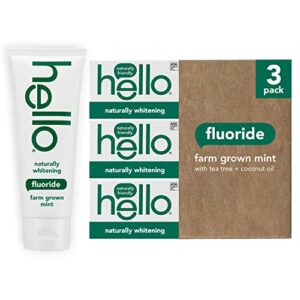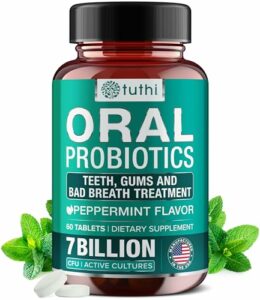Are you looking for effective ways to prevent cavities and keep your teeth healthy? We understand the importance of maintaining good oral hygiene and we’re here to help. In this step-by-step guide, we will show you how to brush your teeth properly to prevent cavities. Our goal is to equip you with the knowledge and techniques you need to take care of your teeth and keep those pesky cavities at bay. Let’s get started on your journey to a cavity-free smile!
Protect Your Smile with These Strategies
Choose the Right Toothbrush
When selecting a toothbrush, it’s important to choose one with soft bristles that can effectively reach all surfaces of your teeth and gums. To ensure you’re using the right toothbrush, follow these simple steps:
- Look for a toothbrush with soft bristles: Opt for bristles that are gentle on your teeth and gums to avoid any potential damage or irritation.
- Check the size and shape of the brush head: Make sure the brush head is small enough to comfortably fit in your mouth and reach all areas of your teeth.
- Consider the handle design: Choose a toothbrush with a handle that feels comfortable in your hand and allows for easy maneuverability.
- Replace your toothbrush regularly: It’s important to replace your toothbrush every three to four months, or sooner if the bristles become frayed or worn.
By following these guidelines, you can ensure that you are choosing a toothbrush that will effectively clean your teeth and gums without causing any harm.
Apply Toothpaste
To apply toothpaste, squeeze a pea-sized amount of fluoride toothpaste onto your toothbrush. This ensures that you have the right amount of toothpaste for effective cleaning.
Proper Brushing Technique
To achieve proper brushing technique, hold your toothbrush at a 45-degree angle to your gums. Then, brush in small circular motions. This allows you to effectively clean both the surface of your teeth and the gumline. Remember to use gentle pressure and cover all areas of your mouth for a thorough cleaning. Happy brushing!
Brush All Surfaces
Brush the outer, inner, and chewing surfaces of each tooth. Start by holding the toothbrush at a 45-degree angle against the gumline. Use short, gentle back-and-forth strokes to clean the outer surface of each tooth. Then, move to the inner surface and brush using the same technique. Finally, clean the chewing surfaces by using a circular motion. Make sure to cover every tooth, paying close attention to the back molars. Brushing all surfaces thoroughly helps remove plaque and keeps your teeth clean and healthy.
Pay Attention to Your Tongue
Gently brush your tongue using a tongue scraper or a soft-bristled toothbrush to remove bacteria and freshen your breath. Start from the back of your tongue and move towards the front, using light pressure. Rinse your mouth with water afterward to remove any residual bacteria.
Brush for Two Minutes
To brush your teeth for a full two minutes, start by wetting your toothbrush with water. Then, apply a pea-sized amount of toothpaste to the bristles. Next, hold the toothbrush at a 45-degree angle to your teeth and brush in gentle, circular motions. Make sure to brush all surfaces of your teeth, including the front, back, and chewing surfaces. Don’t forget to also brush your tongue to remove any bacteria. Finally, rinse your mouth with water and spit out the toothpaste. By following these steps, you will ensure a thorough clean and maintain good oral hygiene.
Rinse Your Mouth
After brushing, rinse your mouth with water to remove any remaining toothpaste. This step is important because it helps to wash away any residue and ensures a fresher feeling in your mouth. To rinse your mouth effectively, simply take a small sip of water, swish it around for a few seconds, and then spit it out. Repeat this process a few times until you no longer taste any toothpaste. For example, you can tilt your head back slightly, pour a small amount of water into your mouth, and swish it around for about 10 seconds before spitting it out into the sink.
Use Dental Floss
Flossing between your teeth is an essential step to effectively remove plaque and food particles. To properly floss, take about 18 inches of dental floss and wrap it around your middle fingers, leaving a few inches of floss to work with. Hold the floss tightly between your thumbs and index fingers and gently glide it up and down between each tooth, making sure to curve it around the base of each tooth to reach the gum line. Finally, don’t forget to use a clean section of floss for each tooth to avoid spreading bacteria.
Consider Mouthwash
Use an antimicrobial mouthwash if recommended by your dentist. Rinse your mouth with the mouthwash after brushing your teeth. This will help further reduce bacteria in your mouth and maintain oral hygiene.
Visit Your Dentist Regularly
Schedule regular dental check-ups every six months to ensure optimal oral health and prevent cavities. Regular visits to your dentist allow them to detect any potential issues early on and provide necessary treatment. This proactive approach helps maintain a healthy smile and prevents more significant dental problems in the future.
Protect Your Smile and Health
In conclusion, we have explored the essential steps to brush your teeth properly and prevent cavities. By following these guidelines, you can ensure that your oral hygiene routine is effective in maintaining a healthy smile. Remember to brush for at least two minutes, using a soft-bristled toothbrush and fluoride toothpaste. Pay close attention to all surfaces of your teeth, including the gumline, and don’t forget to clean your tongue as well. Additionally, incorporating flossing and mouthwash into your routine can further enhance cavity prevention. By taking these measures, you are actively promoting your oral health and safeguarding against the development of cavities. Stay committed to these practices, and your teeth will thank you for it. Keep smiling!
Essential Supplies
Effective Oral Care Techniques
Simple Steps for a Healthy Smile
- Brushing technique: Start by holding the toothbrush at a 45-degree angle towards the gum line. Use gentle, circular motions to clean all surfaces of your teeth, including the front, back, and chewing surfaces. Remember to brush for at least two minutes, twice a day
- Flossing: Flossing is essential to remove plaque and food particles from between the teeth and along the gum line. Take a piece of dental floss and gently slide it between each tooth, making a C-shape motion to hug the tooth. Repeat this for all teeth, ensuring to reach the back teeth as well
- Fluoride toothpaste: Use a fluoride toothpaste as it helps strengthen the tooth enamel and prevent cavities. Apply a pea-sized amount of toothpaste on your toothbrush and brush thoroughly. After brushing, spit out the excess toothpaste, but do not rinse your mouth immediately to allow the fluoride to stay on your teeth
- Healthy diet: Reduce the consumption of sugary and acidic foods and beverages. These substances can contribute to tooth decay. Instead, focus on a balanced diet rich in fruits, vegetables, whole grains, and lean proteins. Drinking plenty of water throughout the day is also beneficial for oral health
- Regular dental check-ups: Schedule regular visits to your dentist for check-ups and cleanings. Dental professionals can identify early signs of tooth decay or other oral health issues and provide necessary treatments or advice. They can also offer personalized cavity prevention strategies based on your specific needs
- Remember, cavity prevention is a lifelong commitment to maintaining good oral hygiene habits and making healthy choices. Incorporating these strategies into your daily routine will go a long way in preserving your dental health
Preventing Cavities: Your Guide to a Healthier Smile
What are the signs that we may be at a higher risk for developing cavities?
There are several signs that indicate we may be at a higher risk for developing cavities. Firstly, poor oral hygiene practices such as infrequent brushing and flossing can increase our risk. Additionally, if we consume a diet high in sugary foods and drinks, the bacteria in our mouth can produce more acid, leading to tooth decay. Dry mouth, which can be caused by certain medications or medical conditions, can also put us at a higher risk. Furthermore, if we have a history of cavities or tooth decay, it suggests that we may be more susceptible to developing them again in the future. Lastly, if our teeth have deep pits and fissures or are misaligned, it can make it easier for plaque and bacteria to accumulate, increasing our risk of cavities. It’s important to be aware of these signs and take appropriate steps to maintain good oral hygiene and visit our dentist regularly for preventive care.
What are some effective ways to encourage children to follow cavity prevention strategies?
To encourage children to follow cavity prevention strategies, there are several effective ways that we can try. First, we can emphasize the importance of oral hygiene and explain why it is crucial to maintain healthy teeth and gums. We can talk to children about the consequences of not taking care of their teeth, such as tooth decay, cavities, and the discomfort that may come with them.
Second, we can lead by example and show children how to take care of their own oral health. Demonstrating proper brushing and flossing techniques and consistently practicing good oral hygiene ourselves can inspire children to do the same.
Third, we can make oral care fun and engaging. We can incorporate enjoyable activities into their routine, such as singing a toothbrushing song or using colorful toothbrushes and toothpaste. Additionally, we can introduce interactive tools, like timers or apps, to make brushing more exciting and ensure they brush for the recommended two minutes.
Fourth, it is important to involve children in decision-making regarding their oral health. We can take them to the store and let them choose their own toothbrushes, toothpaste flavors, and floss. This sense of ownership and autonomy can motivate them to use these products regularly.
Fifth, positive reinforcement plays a significant role in encouraging children. Praising and rewarding them for their efforts in maintaining good oral hygiene can boost their confidence and make them more likely to continue practicing cavity prevention strategies.
Lastly, regular dental check-ups are crucial for cavity prevention. We can explain to children that visiting the dentist is an essential part of maintaining a healthy smile and that the dentist is there to help and support them.
By combining these strategies, we can effectively encourage children to follow cavity prevention strategies and set them on the path to a lifetime of good oral health.


